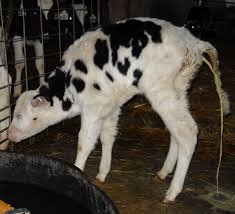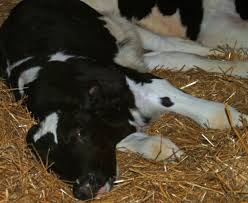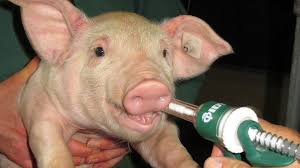Salmonellosis: Description, Damages Caused, Control and Preventive Measures
Salmonellosis, scientifically known as Salmonella infection, is a type of bacterial illness caused by the Salmonella bacteria. These bacteria are widespread in the environment and can be found in the intestines of animals, birds, and humans. The infection is often contracted through the consumption of contaminated food, especially raw or undercooked eggs, poultry, meat, and unpasteurized milk.
When a person ingests Salmonella, the bacteria can cause various symptoms, including diarrhea, abdominal cramps, nausea, vomiting, fever, and headache. The severity of the illness can range from mild to severe, and in some cases, it may even lead to hospitalization.
Salmonella bacteria can contaminate food during its production, processing, or handling. Poor hygiene practices, inadequate cooking temperatures, and cross-contamination are common ways in which the bacteria can spread to food. It’s crucial for individuals to practice proper food safety measures, such as thorough cooking of meat and eggs, washing hands and kitchen surfaces regularly, and avoiding the consumption of raw or undercooked foods.
In addition to foodborne transmission, Salmonellosis can also be contracted through contact with infected animals or their environment. Pet reptiles, such as turtles and snakes, are known carriers of Salmonella, and close interaction with them without proper hand hygiene can result in infection.
Although most cases of Salmonellosis resolve on their own with supportive care, severe cases may require medical attention. Dehydration is a common complication, so staying hydrated is essential during the illness. Antibiotics are not typically prescribed for uncomplicated cases, as they may prolong the shedding of the bacteria.
Preventing Salmonellosis involves a combination of proper food handling, cooking, and personal hygiene practices. Thoroughly washing hands before and after handling food, separating raw and cooked foods, and using separate cutting boards for different food items are essential steps in reducing the risk of infection.
Practicing good hygiene and following proper food safety measures are crucial in preventing the spread of this illness. If symptoms occur, seeking medical advice and staying hydrated can aid in a faster recovery.
Read Also: Nine (9) Nutrient Requirements of Rabbits
Animals Affected by Salmonellosis (Salmonella)

Salmonellosis can affect a wide range of animals, not just humans. Domestic and wild animals alike may become carriers of Salmonella bacteria, leading to various health issues. Reptiles, particularly turtles, snakes, and lizards, are commonly associated with Salmonellosis transmission. These animals may carry the bacteria in their digestive tracts without showing any signs of illness.
In addition to reptiles, other animals that can be affected include birds (such as chickens and ducks), mammals (including cows, pigs, and horses), and even insects. Salmonella can be present in the feces of infected animals, and if proper hygiene measures are not followed, it can contaminate the environment, food, and water sources.
Pets in households, such as dogs and cats, may also be carriers of Salmonella. While they may not always exhibit symptoms, their fur or paws can carry the bacteria, posing a risk to human health, especially in households with young children or individuals with weakened immune systems.
Farm animals, commonly raised for food production, can contract Salmonellosis, and the bacteria can be present in their meat or other products derived from them. Contaminated animal products can then serve as a source of infection for humans if not properly handled or cooked.
It’s important for pet owners, farmers, and individuals working with animals to maintain good hygiene practices. Regular handwashing, especially after handling animals or their waste, is crucial in preventing the spread of Salmonella. Additionally, proper sanitation in animal environments and careful food handling can contribute to reducing the risk of Salmonellosis transmission from animals to humans.
Damages Caused by Salmonellosis

Salmonellosis can lead to various health issues and, in some cases, result in significant complications. The severity of the illness can vary, ranging from mild discomfort to more severe conditions that may require medical intervention.
1. Gastrointestinal Distress: The most common symptoms of Salmonellosis include diarrhea, abdominal cramps, nausea, and vomiting. These symptoms can cause dehydration, especially in vulnerable populations such as infants, elderly individuals, or those with weakened immune systems.
2. Dehydration: Prolonged diarrhea and vomiting can lead to dehydration, a condition where the body loses more fluids than it takes in. Dehydration can be particularly dangerous, requiring medical attention to restore proper fluid balance through oral rehydration solutions or, in severe cases, intravenous fluids.
3. Fever and Headache: Salmonella infection often results in an elevated body temperature (fever) and headaches. These symptoms contribute to overall discomfort and may necessitate rest and proper management to alleviate the effects.
4. Systemic Infections: In some instances, Salmonellosis can lead to more severe infections that spread beyond the gastrointestinal tract. These systemic infections may affect organs such as the bloodstream, bones, or joints, requiring prompt medical treatment with antibiotics.
5. Long-Term Consequences: While most cases of Salmonellosis resolve on their own, some individuals may experience lingering symptoms or develop chronic conditions. Reiter’s syndrome, a type of reactive arthritis, is one example of a long-term consequence associated with Salmonella infection.
6. Hospitalization: Severe cases of Salmonellosis may necessitate hospitalization, especially if complications arise. Hospital care may include intravenous fluids, monitoring, and, in certain situations, antibiotics.
7. Spread to Vulnerable Populations: Salmonella infection can pose a significant risk to vulnerable populations, such as infants, elderly individuals, and those with weakened immune systems. In these groups, the consequences of Salmonellosis can be more severe and may require specialized medical care.
Preventing the damages caused by Salmonellosis involves adopting proper food safety practices, ensuring thorough cooking of food, and promoting good personal hygiene. Swift medical attention is crucial for individuals experiencing severe symptoms or those at higher risk of complications.
Read Also: Rabbit Feeds and Feeding Systems
Control and Preventive Measures

Controlling and preventing Salmonellosis involves a combination of measures to minimize the risk of infection and the spread of Salmonella bacteria. Here are key control and preventive measures:
1. Proper Food Handling: Cook meats thoroughly, especially poultry, eggs, and ground meats, to kill any Salmonella bacteria present. Avoid consuming raw or undercooked eggs and unpasteurized milk.
Separate raw and cooked foods to prevent cross-contamination.
2. Hand Hygiene: Wash hands thoroughly with soap and water after handling raw meat, using the bathroom, or touching animals.
Use hand sanitizers if soap and water are not available.
3. Safe Food Storage: Refrigerate perishable foods promptly to prevent bacterial growth.
Store raw meats separately from ready-to-eat foods in the refrigerator.
4. Avoiding High-Risk Foods: Be cautious with foods that are more prone to Salmonella contamination, such as raw sprouts and unpasteurized juices.
5. Pet and Animal Hygiene: Wash hands after handling pets, especially reptiles, and avoid allowing them to roam in areas where food is prepared. Keep pet living areas clean to reduce the risk of Salmonella transmission.
6. Avoiding Cross-Contamination: Use separate cutting boards and utensils for raw and cooked foods. Clean kitchen surfaces, utensils, and cookware thoroughly after preparing raw meat or eggs.
7. Safe Water Practices: Ensure access to safe and clean drinking water. Treat water from potentially contaminated sources before consumption.
8. Educational Programs: Implement public health campaigns to raise awareness about Salmonellosis and promote proper food handling and hygiene practices.
9. Surveillance and Reporting: Establish surveillance systems to monitor and identify outbreaks of Salmonellosis. Encourage prompt reporting of suspected cases to public health authorities.
10. Regulatory Measures: Implement and enforce regulations related to food safety and animal health in farming and food production.
Regularly inspect and monitor food establishments to ensure compliance with hygiene standards.
11. Antibiotic Stewardship: Use antibiotics judiciously and only when prescribed by healthcare professionals to avoid contributing to antibiotic resistance.
12. Vaccination (for Animals): In some cases, vaccination of animals in farming or domestic settings may be implemented to reduce Salmonella prevalence.
By diligently following these preventive measures, individuals, food handlers, and health authorities can work together to minimize the occurrence and impact of Salmonellosis, promoting public health and safety.
Frequently Asked Questions (FAQs) About Salmonellosis (Salmonella)
1. Q: What is Salmonellosis, and how is it caused?
Salmonellosis is an infectious disease caused by the Salmonella bacteria. It typically occurs when individuals consume contaminated food, especially raw or undercooked eggs, poultry, meat, or unpasteurized milk. Contact with infected animals or their environment can also lead to Salmonellosis.
2. Q: What are the common symptoms of Salmonellosis?
Common symptoms include diarrhea, abdominal cramps, nausea, vomiting, fever, and headache. These symptoms usually appear within 6 to 72 hours after infection and can last between 4 to 7 days.
3. Q: How is Salmonellosis diagnosed?
Doctors often diagnose Salmonellosis through a stool culture, where a sample is tested for the presence of Salmonella bacteria. Blood tests may also be conducted in severe cases or when the infection spreads beyond the gastrointestinal tract.
4. Q: Can Salmonellosis be severe or life-threatening?
While most cases of Salmonellosis are mild and resolve on their own, severe cases can occur, especially in vulnerable populations. In some instances, the infection may spread to the bloodstream, leading to more serious complications.
5. Q: How is Salmonellosis treated?
In most cases, Salmonellosis does not require specific treatment, and individuals recover with rest and proper hydration. Severe cases or those with complications may require hospitalization, and antibiotics may be prescribed in certain situations.
6. Q: How can Salmonellosis be prevented?
Preventive measures include practicing proper food handling and hygiene, avoiding raw or undercooked foods, washing hands thoroughly, and maintaining clean living environments for pets. Following food safety guidelines and regulatory measures can significantly reduce the risk of Salmonellosis.
7. Q: Are there long-term consequences of Salmonellosis?
While most people recover fully, some may experience lingering symptoms or develop conditions like reactive arthritis. Reiter’s syndrome, a form of reactive arthritis, is a potential long-term consequence associated with Salmonella infection.
8. Q: Can animals transmit Salmonellosis to humans?
Yes, animals, especially reptiles like turtles and snakes, can carry Salmonella bacteria. Contact with these animals or their environments without proper hygiene measures can lead to human infection. Other animals, including birds and mammals, may also carry and transmit Salmonella.
9. Q: Is there a vaccine for Salmonellosis?
Currently, there is no widely available vaccine for Salmonellosis in humans. Prevention mainly relies on practicing proper food safety and hygiene measures.
10. Q: When should I seek medical attention if I suspect Salmonellosis?
If you experience severe symptoms such as persistent high fever, bloody stools, dehydration, or if you belong to a high-risk group (e.g., infants, elderly, immunocompromised), it’s advisable to seek medical attention promptly.
Read Also: The Art of Waste to Jewelry Business









